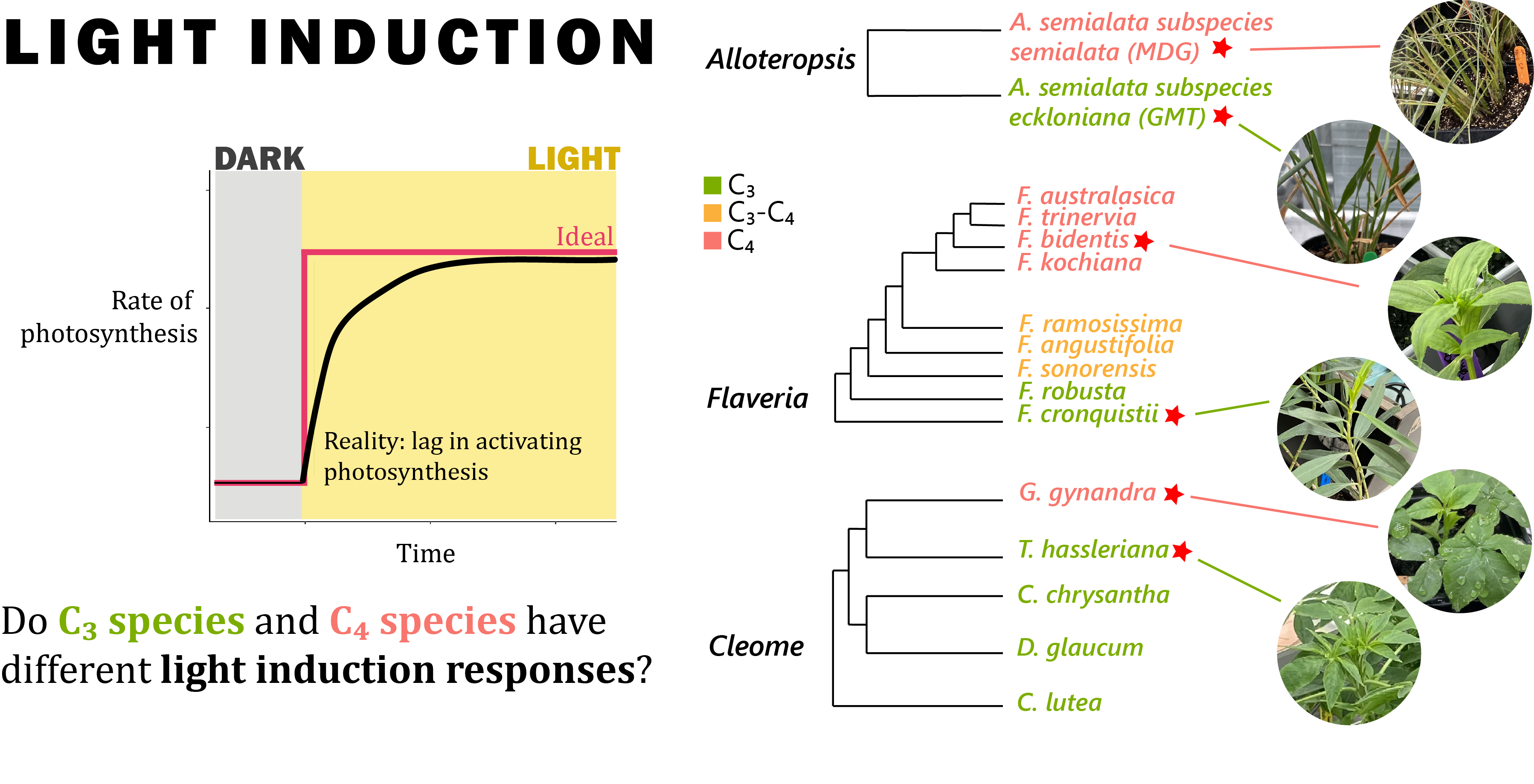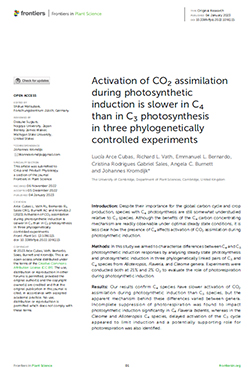
Submitted by Anonymous on Fri, 17/02/2023 - 10:15
C4 plants slower than C3 plants to engage photosynthesis as light levels increase
Photosynthesis is the fundamental basis of life on land – plants use the process to convert light and carbon dioxide into energy for their growth, and produce oxygen as a byproduct. Some plants, mostly in tropical and subtropical regions, have evolved a more efficient type of photosynthesis known as C4 photosynthesis, which enables them to use up to 50% more of the sun’s light energy than plants that use the ‘regular’ C3 type, and thereby to be much more productive.
Of the major crops, maize and sorghum use C4 photosynthesis, and there is interest in introducing C4 photosynthesis into C3 crops, such as rice, wheat and barley, to increase yields and help boost food security. To do this, scientists and breeders need to understand how C4 species respond the dynamic and constantly changing light conditions they normally grow in, as well as to the constant light conditions they usually create in the laboratory.
In a pioneering study, scientists in the Environmental Plant Physiology Group in the department found that restarting photosynthesis in plant cells after dark periods in the C4 species they studied (Alloteropsis semialata subspecies semialata accession GMT, Flaveria bidentis and Gynandropsis gynandra) takes longer than in phylogenetically-linked ‘cousin’ C3 species (Alloteropsis semialata subspecies semialata accession MDG, Flaveria conquistii and Tarenaya hassleriana), despite the higher overall efficiency of the C4 plants’ photosynthesis.
"Plants exist in extremely dynamic environments. Changes of light during the day, cloud cover, wind in canopies and self-shading all guarantee a constantly changing environment, and so understanding how plants operate in these conditions is very important," said PhD candidate Lucía Arce Cubas, lead researcher of the study. "Photosynthetic induction, the increase in photosynthesis after illumination until the leaf reaches a stable steady state, has been flagged as a source of inefficiency in C3 species, and we provide evidence that it may be even more important in C4 plants."
Differing mechanisms behind slower induction
The mechanisms behind the slower induction in C4 plants depended on the species – F. bidentis’s slower induction was partially explained by less efficient suppression of photorespiration, whereas in G. gynandra and A. semialata MDG, the slow activation of the Calvin Cycle was a more likely culprit. Although photorespiration is generally considered a wasteful alternative reaction to photosynthesis, in C3 T. hassleriana and both C3 and C4 Alloteropsis species, suppressing photorespiration also slowed the activation of CO2 assimilation, suggesting that photorespiration may support induction of photosynthesis in these species.
"Understanding the differences between C3 and C4 photosynthesis in three phylogenetically linked comparisons with significant evolutionary distance between them, rather than a random selection of C3 and C4 species, allowed us to conclude more definitively which variation is truly due to C4 photosynthesis, and not to some other species-specific trait." said Ms. Arce Cubas.
“C4 photosynthesis is often presented as a more efficient form of carbon acquisition and assimilation compared to ‘regular’ C3 photosynthesis. However, very few studies control for evolutionary distance when comparing these pathways. Using more closely related species to compare these pathways allows us to test which of the perceived differences between C3 and C4 photosynthesis are truly generalizable." said Dr Johannes Kromdijk, the study’s corresponding author.
"The results show that the C4 photosynthesis process may trade higher efficiency under constant light for slower activation."
Links
Lucía Arce Cubas, Richard L. Vath, Emmanuel L. Bernardo, Cristina Rodrigues Gabriel Sales, Angela C. Burnett and Johannes Kromdijk (2023). Activation of CO2 assimilation during photosynthetic induction is slower in C4 than in C3 photosynthesis in three phylogenetically controlled experiments. https://www.frontiersin.org/articles/10.3389/fpls.2022.1091115/full

